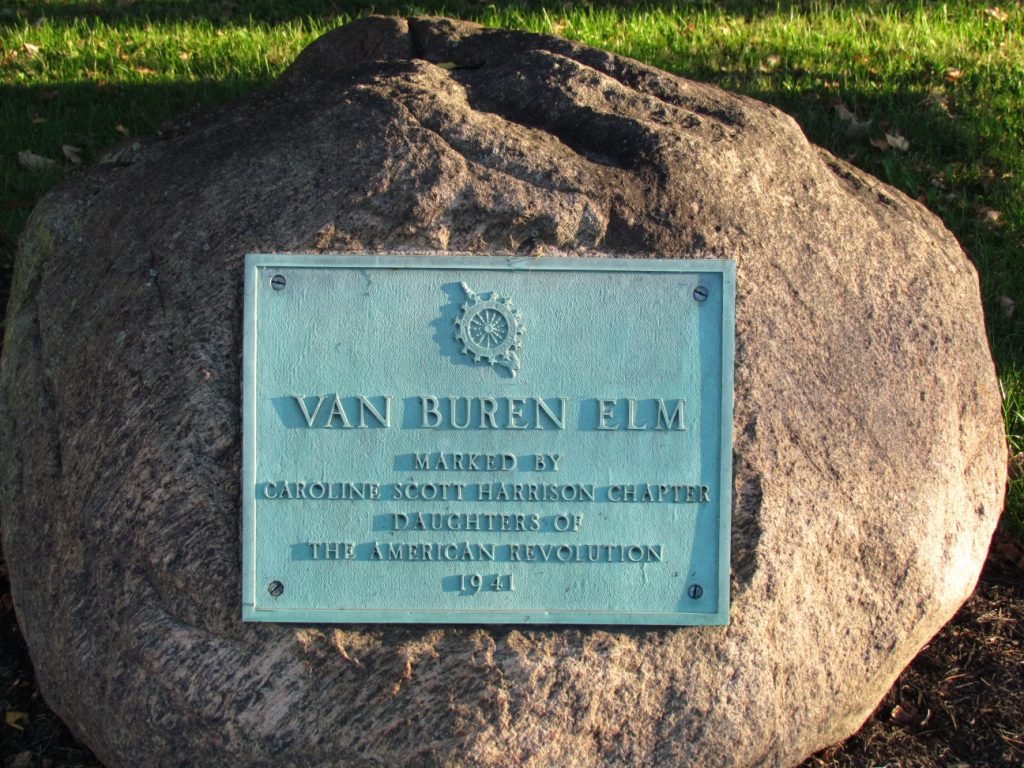A Different Type of Presidential Mudslinging
Martin Van Buren served one term as President of the United States, occupying the White House from 1837 until his term ended in March of 1841. Most people today probably couldn’t name a single thing he did during his time in office. He took office just after a financial collapse now called the Panic of 1837 and was ineffective at staving off the economic depression that followed. Slavery was one of the major issues of the day, but Van Buren effectively simply maintained the status quo, including not granting Texas statehood; he believed slavery to be immoral but legally permissible, and therefore, not really his problem, but not something he wanted to exacerbate. He followed Andrew Jackson in office and continued his predecessor’s efforts to remove Native Americans from their homes, continuing the increasingly unpopular and bloody Second Seminole War in Florida.
It’s not a great resume, and it shouldn’t be surprising that Van Buren wasn’t re-elected in 1840. But he didn’t give up. In 1844, he mounted a new campaign for the Presidency. His shift to a vocal anti-slavery posture doomed his chances of getting the Democratic nomination, but for some voters, more local issues were paramount. Specifically, Van Buren — as President, and also as Vice President and Secretary of State before his time as the nation’s chief executive — was staunchly against federal investment in infrastructure. Or, in other words, he didn’t think the federal government should be building roads in, say, Indiana.
Which is why this exists — and, probably, why there’s a school named after him nearby.

The rock and plaque seen above are located in Plainfield, Indiana, a suburb of the state capital of Indianapolis. (Here’s the marker on Google Street View, but you need to zoom in a bit.) It marks the former location of the “Van Buren Elm,” a tree named after the erstwhile President, but not for a good reason — at least, not if you were Martin Van Buren. He visited Plainfield in 1842 as part of his long and fruitless efforts to win the 1844 election, and some of Plainfield’s residents weren’t fans of his. Specifically, they wanted him to invest in improvements to the National Road, which happened to run through their fair town. And they wanted him to learn why.
The roads in the area weren’t roads like you’d expect today; more accurately, they were just worn paths from horse-drawn carriages trampling by day after day, for years. There were lots of rocks and divots and other hazards on the paths, and if a carriage came by too quickly, disaster would soon follow. One section of the road in Plainfield was particularly treacherous; the root system of a nearby elm tree turned the path into a pockmarked battleground of moguls and mud puddles. And that gave the Plainfield pranksters an opportunity, as NPR explains:
At the base of the tree was a large mud hole where pigs wallowed. There were two routes to get around it, but the carriage driver deliberately took the rough route knowing the elm’s roots would overturn the carriage and send Van Buren flying into the mud. The plan was executed perfectly. The carriage tipped over, and Van Buren went into the muck, soiling his starched white clothes and filling his boots with thick mud.
Van Buren was embarrassed, to say the least: per NPR, “residents who had gathered in their Sunday best to greet the ex-president stood amazed as a humbled Van Buren made his way to the town tavern to clean up.” But he probably got on with his life and didn’t think much of the event afterward; according to a 1933 newspaper report, the former President, in recounting his trip to Indiana, “was well pleased with his reception in [Indianapolis] and glossed over the humorous incident at Plaimfilled (wait, where?) two days later. as an ‘unfortunate accident.'”
The same can’t be said for the proud people of Plainfield. NPR reports that the fans of the stunt gifted the carriage driver a silk hat, and in 1916 — nearly 75 years after the event occurred — the town placed a marker on the spot of the event. As recounted in the Indianapolis News just days after the marker was first placed, the dedication ceremony featured a marker that hung from the tree itself, and the attendance for the ceremony was enough for the reporter to declare the event “an impressive service.”
The tree, however, is long gone. It failed to sprout new leaves in 1945 and was declared dead by whoever declares trees dead in small Indiana towns, and was felled that September. The marker above, placed in 1941, is all that remains of the tree, and perhaps to further honor the moment. And despite the fact that Marvin Van Buren has no other known ties to Plainfield, a local elementary school is also named for the former President.
Bonus fact: As Van Buren’s first term came to a close and he sought re-election, he had no difficulty in getting his party to nominate him for the office again. But the Democrat’s Vice President, Richard Mentor Johnson, can’t say the same. Johnson was unpopular and many Democratic delegates thought he’d be a liability, but Van Buren saw otherwise. As a compromise of sorts, the Democrats decided to simply not nominate anyone for the VP role. Individual states and their electors were left to decide who to vote for, and had Van Buren won, the VP election would have likely been undecided and left to the Senate to figure out — much like they had to four years earlier for other reasons. (Van Buren lost the general election, so this didn’t come to pass.) This is the only time since the ratification of the 12th Amendment to date that a major party has failed to nominate a candidate for Vice President.
From the Archives: Easier Than Pi: Why π was almost 3 in Indiana.
